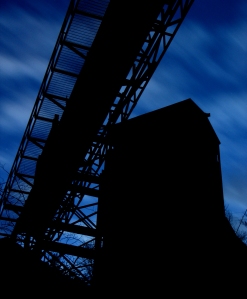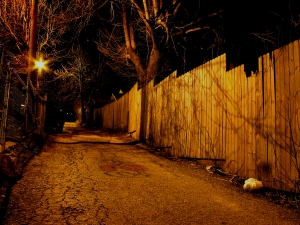I love to travel, and I love to take pictures. If I can do both and get paid for it, I’m in heaven. I have spent much of the last few years working as a traveling pathologist. In 2006, I was fortunate enough to be offered an assignment in Hazard, Kentucky, the little town in Appalachia that inspired the “Dukes of Hazzard” series.
Southeastern Kentucky lives on coal; when the rest of America buys coal, the mines run 24 hours, and families eat well. When coal is out of favor, people go hungry. Poverty and hardship are part of life in the mountains. Often Appalachian towns aren’t pretty; old buildings are abandoned and crumbling, paint peels from ramshackle houses, and Wal-Mart is the premier place to shop. Yet never have I met people who have a stronger sense of their roots, their family, and their faith.
Many Appalachian towns are tiny- a collection of ten or twenty houses, a gas station and maybe a store, tucked into the bend of the river or a corner of a “Holler” between the mountains. They have names like “Viper” or “Scuddy” or “Fourseam”. Many houses are old, often representing old coal company housing, and people are obviously poor. Yet in the middle of each of these little towns is a church with fresh paint, a parking lot without a blade of grass in the asphalt, and a neatly painted sign. In a year in the mountains, I saw only one church that wasn’t impeccably kept. Most mountain people have deep religious faith, and “family values” has real meaning. Friendship and hospitality to strangers are an integral part of Appalachian culture.

The Old Blue Diamond Mine: My Place to Watch the Sunset
As a photographer, my experiences were rich in both imagery and spirit. On my time off, I would spend evenings and weekends hiking the many mining roads that crisscrossed the mountaintops near Hazard. I would prowl abandoned processing plants, climbing ladders and catwalks and photographing cables and conveyor belts. At the end of the day, I would sit on the mountainside on the steps of an abandoned coal processing plant, watch the sun go down, then hike down the mountain listening to the cacophony of frogs, watching the fireflies and searching for glowworms among the fallen leaves. It was there that I heard my first whippoorwill. I collected fossils, which are plentiful in coal country, and learned about Kentucky’s native plants.

The Old Blue Diamond Mine at Twilight
Occasionally, I am fortunate enough to find both a memorable image and an adventure. Shortly after arriving in Hazard, I and my camera were out one night exploring Combs, a little town that climbs up the side of a mountain to an old cemetery at the top. I paused to take a time exposure of one street that went up the mountainside between huge maples, their bare branches stark in the illumination of the streetlights. I noticed people peering out of the windows of the house next to me.

Main Street at Midnight, Combs, KY
I could see someone making a phone call, then neighbors arrived, and soon there was a group at the widow watching me. Finishing my exposure and not wanting to alarm anyone, I went to the gate and began to explain my peculiar behavior to an elderly woman who was just leaving the house. She snapped “I don’t hold with that kind of stuff” and stomped off. I was perplexed. This wasn’t the friendly Kentucky I was used to.

The Drug Dealers' Shack
I walked up to the top of the hill, finding an old shack beneath an enormous maple tree, illuminated by the light of a single lamp- a wonderful picture. By this time, I had acquired a pack of neighborhood dogs, who surrounding me, barking vigorously. As I was setting up my picture, a man and a woman came out of a nearby house. The woman held back, while the man approached, asking me what I was doing. I explained, showing him some of my pictures. He grunted and walked off. Once more I was puzzled, not being used to this kind of reception.
The next morning, I mentioned to the lab manager that I had been in Combs, and asked if it was safe to wander around there after dark. She replied, “Oh, you’ll be fine. People are good to strangers. They just shoot their relatives.” Then she added, “But you know, there used to be an old shack up on the top of the mountain by the cemetery, and a drug dealer used to sell his stuff out of there”. Apparently, this was where I had been taking my photographs. In my Doc Martens and Eddie Bauer vest, I clearly wasn’t a local. Obviously, I was either another dealer looking to set up shop, or a government agent. Neither was popular in that town.
I later learned that shooting your relatives is still not an uncommon way of settling family disagreements in Appalachia. Fortunately, I was not related to anyone in Combs.
Note: This posting is an excerpt from the full article “A Pathologist in Appalachia”, published in the 2008 edition of the King County Medical Journal. Please refer to the page “A Pathologist in Appalachia: At Home with the Dukes of Hazzard” for the full article.
Awesome stuff. You made a really nice compilation. Thanks!